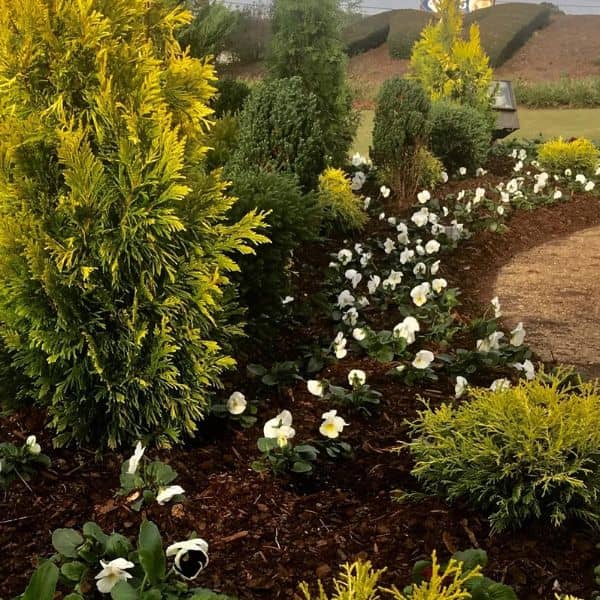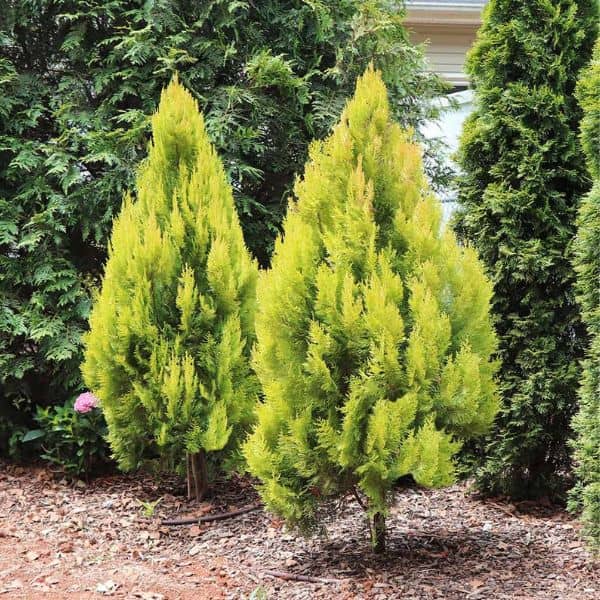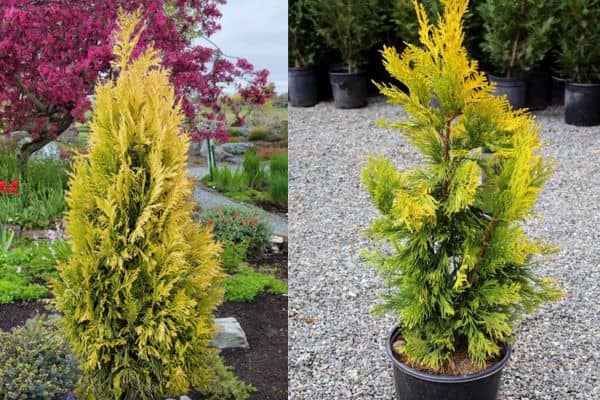A beautiful shrub with bright yellow foliage that can decorate your garden is Forever Goldy Arborvitae. It can be a good choice for various garden designs such as borders, screens, and hedges. In addition, it has dense foliage that provides shade against severe weather conditions in the outdoor living area and also adds beauty to the same space.
This plant needs low maintenance, full sun to partial shade in well-drained soils, it is a long-term plan that thrives year after year but it has to be watered correctly, fertilized, and pruned so as to keep its size and shape thus maintaining the tranquility and charm of your outdoor living room.
This article will cover all necessary information regarding planting, care for, and common problems associated with Forever Goldy Arborvitae.
Introduction Forever Goldy Arborvitae
The beautiful evergreen shrub also named “Thuja occidentalis” is popular for its unique features. This plant is popular for its vivid golden yellow leaves that maintain their color all year round and become one of the great options for giving landscapes a captivating look.
One of the distinctive characteristics of Forever Goldy Arborvitae is its bright golden yellow leaf, which reaches 10-15 feet tall and 3-4 feet wide, while it might differ depending on the growing conditions. It is naturally dense and pyramidal.
Enhance Your Garden: Foreover Goldy Arborvitae Companion Plants

Plant Arborvitae with other plants selecting the right companion plants for it that can enhance the look of your garden:
1. Hostas, their lish, broad leaves will give your garden a beautiful contrast to the fine texture of arborvitae.
2. Coral Bells, Its vibrant colorful leaves come in a variety of shades green, burgundy, purple, and silver, which will add bursts of color to gardens.
3. Japenese Forest Grass, this ornamental grass will enhance the arborvitae’s form design by bringing softness to your surroundings.
4. Boxwood, this evergreen shrub will provide an even background that enhances the arborvitae’s golden color.
Essential Forever Goldy Arborvitae Care Tips
Soil
Arborvitae prefers well-drained soil, moist soil that has a pH of slightly acidic and neutral to make sure that it grows well. Maintain sufficient drainage to avoid root rot, also add sand or organic materials as a fertilizer if the soil is mostly clay. To improve the form and fertility of the soil, add compost or well-rotted manure.
Sunlight
Arborvitae does well in full sun to partial shade, the more sunlight the tree receives, the brighter its color will be, it can also tolerate some partial shade but if you keep this plant in too much low light, then it can result in your plant looking dull, and colorless.
While planting Arborvitae, choose a location that receives some early morning light and afternoon shade too.
Spacing Plants three to four feet apart as the tree grows it will fill the gaps creating a dense, continuous screen.
Watering
Proper watering is needed for the healthy growth of your plant, as it requires frequent watering, you will have to water deeply once or twice a week after planting to make sure that the soil is moist for the first year. In hot and dry summers, this plant requires more frequent, likewise, in winter, water them less.
Avoid overwatering, and always check the moisture of the soil before watering, also mulch your plant as it helps to both retain moisture and control soil temperature.
Fertilizer
Giving Forever Goldy Arborvitae the proper nutrients is essential to support strong growth and colorful leaves. The perfect time to apply fertilizer to your plant is early spring, as applying fertilizer at this time ensures the plant gets plenty of nutrients throughout the growing season.
Pruning
Maintaining and Pruning a Forever Goldy Arborvitae is important to keep it healthy and to maintain the perfect shape. Here are some methods to prune your Goldy Arborvitae:
- The perfect time to prune your plant is in late winter or early spring before new growth develops.
- Take clean sharp pruning shears for smaller branches, whereas for the bigger branches, pruning saws are required.
- Look for dead or damaged branches in your plant and using the pruning shears trim or cut those leaves to maintain their shape.
Steps for Planting Forever Goldy Arborvitae
- First thing to remember while planting a Goldy Arborvitae is the right location, that receives adequate full sun.
- After you have chosen the proper location, clean up any grass, or unwanted debris from the planting area, then, make a hole that is the same depth as the root ball and twice as wide, this lets your plant’s root spread out freely.
- Combine well-rotted compost with the excavated soil this improves the drainage and fertility of the soil.
- Carefully take out the Arborvitae from the container, and if necessary gently loosen its tightly joined roots.
- In the middle of the hole, place the tree, ensuring the top of the root is slightly above ground level and the tree is straight to let it settle.
- Fill the hole with amended soil, which helps in settling and removing air pockets.
- Water thoroughly after you have planted.
You may like to read more about, True Passion Rose Care Guide and Tips
Landscaping Uses: Goldy Arborvitae
Do you want to give your garden/landscape more greenery and an addition of beauty?
Are you thinking of making a privacy screen or a natural barrier? Plant a number of Forever Goldy Arborvitae 3-4 feet apart for a vibrant hedge that can be both a design and a useful addition to your yard.
For a colorful mixed border, combine Arborvitae with shrubs, perennials, and grasses, as their golden tones complement a wide range of colors and textures.
Are you thinking of building a foundation? Plant a Forever Goldy Arborvitae next to the foundation of your house, make sure there is enough space for it to be visible.
For outdoor spaces, decks, and other exterior areas, Forever Goldy Arborvitae may be planted in big pots, to keep the plant healthy, make sure the container has enough drainage, and give it regular nutrients and watering.

Common Problem in Goldy Arborvitae
Leaf Discoloration, insect infestations, nutrient problems, overwatering, or underwatering can cause your plant’s leaves to become yellow or brown. For this, check the growing environment of your plant, change the soil, and make the necessary changes if needed.
Root Rot, Poor Drainage can cause root rot resulting in yellowing, and dying leaves, to avoid this improve soil drainage and stop overwatering.
Winter Damage, This plant can be damaged from winter burn in colder areas, leading to browning of leaves, so to protect your plant cover them with burlap screens, or windbreaks and make sure it receives enough water.
FAQs
1. How tall do forever goldy arborvitae grow?
Forever Goldy Arborvitae normally reaches a height of about 10 to 12 feet.
2. Is forever goldy arborvitae deer resistant?
Yes, Goldy Arborvitae is considered deer resistant, while no plants are completely deer-proof, deer tend to avoid arborvitae varieties due to their aromatic foliage and texture.
3. How long does an arborvitae live?
Arborvitae are long-lived evergreen trees that can live for many decades, depending on the species and growing conditions, and are believed to have a lifespan of 50 to 150 years.
